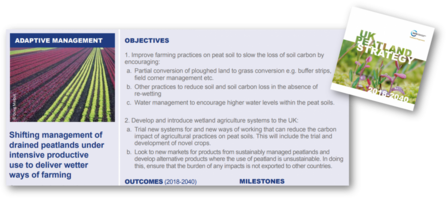With the urgent need to reduce our carbon emissions wherever possible, complimenting traditional agriculture on drained peatlands with wet farming techniques could help reduce greenhouse gases emitted from damaged peatlands.
Most of us consume products grown on peat on a daily basis. Crops such as lettuce and celery are grown directly on peat soils in East Anglia. Dairy cattle are, in places, grazed on intensively drained peatland. Garden produce is often grown in peat-based compost and palm oil can come from trees planted where Southeast Asia’s swamp forests previously stood. All are based on agricultural practices first developed in the dry lands of the Middle East’s Fertile Crescent’ about 12,000 years ago. As farming spread, humankind began an obsession with draining soils for dry-land agriculture rather than working holistically with the prevailing conditions of the land.
Extensive drainage has taken a significant toll on our peatlands. In the UK 80% of peatlands are in a damaged or deteriorating state. When naturally wet peat soils are drained, oxygen enters the soil and releases large amounts of carbon that may have been locked away for millennia, as carbon dioxide. Damaged peatlands are currently responsible for 4% of the UK’s greenhouse gas emissions, with drainage based agriculture accounting for 60% of these emissions despite covering just 15% of UK peatland area1.


